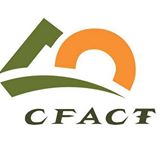 Unsuspecting property owners may find themselves on the outside looking in
Unsuspecting property owners may find themselves on the outside looking in
A seemingly innocuous, bipartisan House bill introduced in late March could subject unsuspecting landowners to the whims of power-hungry environmental groups, eager to usurp the property rights of those who fall into their clutches.
At risk are owners of private forestlands, who may soon discover that they have effectively lost control over property they thought was “theirs.”
Introduced by Reps. Chris Gibson (R‑NY) (left) and John Garamendi (D‑CA) (right), the “Forest Legacy Management Flexibility Act” would, according to its supporters, promote conservation of private forestlands by reducing administrative burdens for states. Specifically, it would allow conservation easements under the U.S. Department of Agriculture’s (USDA) Forest Legacy Program to be held by accredited land trusts, thereby relieving state agencies of the burden of overseeing these legally binding commitments.
“This very simple legislation, if adopted, will establish flexibility in the Forest Legacy Program to allow greater efficiency and effectiveness, at no cost to the public,” said Peter Paden, executive director of Chatham, New York-based Columbia Land Conservancy.
It’s no wonder that the Columbia Land Conservancy, California-based Pacific Forest Trust, and other land trusts enthusiastically support the bill. The legislation provides an opportunity for land trusts to expand their empires and gives them the power to control land-use decisions on untold thousands of acres of private property. And, contrary to what the Columbia Land Trust would have you believe, the cost to the public will be incalculable.
Transferring property rights
As the USDA points out on its website, participation in its Forest Legacy Program is entirely voluntary. But once an owner of private forestland has signed on the bottom line, the voluntary aspect of the program ceases, and strict land-use controls come into play. As the USDA explains it, the program “encourages the acquisition of conservation easements, legally binding agreements transferring a negotiated set of property rights from one party to another, without removing the property from private ownership.”
People who have enlisted in the Forest Legacy Program may have had their squabbles with state bureaucrats, who are sometimes prone to arbitrary decisions in their oversight of the program. But they will rue the day when land-trust busybodies are calling the shots on their property. Once landowners have transferred a negotiated set of property rights from themselves to a land trust, what is to keep the latter from interpreting the language of the easement to suit its ideological proclivities? The USDA says most conservation easements in its program “restrict development, require sustainable forestry practices, and protect other values.” How will land trusts interpret the “development” that is to be restricted? How will land trusts define what is “sustainable?” What are the “other values” the land trusts will decide to protect?
Under the Gibson-Garamendi legislation, land trusts will be empowered to enforce conservation easements on property in the Forest Legacy Program. But who will hold the land trusts accountable for their enforcement? Landowners trying to defend themselves against overzealous enforcement by land trusts will have no choice but to enter into expensive litigation.
Climate change toolkit
According to the Land Trust Alliance, there are 1,700 land trusts in the U.S. overseeing 37 million acres of land – an area roughly this size of all the New England states combined. These groups have political agendas that lend themselves to just the kind of power enactment of the bill would give them. The Land Trust Alliance, for example, plugs a “Climate Change Toolkit” on its website, landtrustalliance.org/climate-change-toolkit/adapt/adapt-land-trust-practices-to-promote-climate-change-resilience. Among the actions land trusts can take on climate change:
- Anticipate and plan for uncertainty through scenario planning and/or adaptive management practices.
- Manage priority habitats for climate change resilience.
- Manage priority wildlife species for climate change resilience.
Open invitation to abuse
The clear political agenda behind the “Climate Change Toolkit,” combined with the lack of any real oversight of how land trusts enforce conservation easements, spells trouble for landowners in USDA’s Forest Legacy Program.
Just ask Martha Boneta, the Virginia farmer, who has been locked in a long and expensive struggle with the Piedmont Environmental Council (PEC) over a conservation easement the PEC co-holds on her land. After years of intrusive inspections, relentless harassment, and even an attempt to install surveillance cameras on her farm, Boneta learned a few weeks ago that the easement she signed on purchasing the property in 2006 is not the one the PEC filed with the county. This is the kind of treatment landowners may be to subjected to if the Forest Legacy Management Flexibility Act is enacted.
Transferring oversight of conservation easements from state agencies to “private” entities may seem like a step in the right direction, but the scheme is blind to the harm land trusts can do. “If you don’t want power abused,” the Cato Institute’s Roger Pilon says, ” don’t grant it in the first place.”
Ultimately, property rights should be kept whole and retained by landowners to pass on to their heirs. Both liberty and the environment are best served when farmers, ranchers, and timberland owners keep their entire bundle of property rights.





